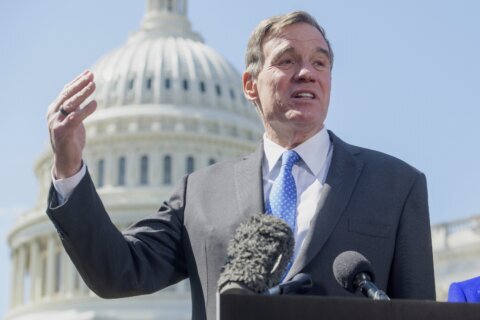Eighty-nine percent of Virginia schools received full accreditation for the 2022-23 school year, according to data released from the state’s Department of Education on Thursday.
The last time accreditation data was released, in 2019-20, 92% of schools — 1,682 of 1,825 — were fully accredited. Accreditation was waived the last two years due to the pandemic.
The state uses a tiered system to determine where schools fall based on academic achievement, achievement gaps and student engagement and outcomes. Performance in each category is rated using levels.
For example, according to the data, 1,705 Virginia schools reached Level One in their academic achievement in English. Schools that reach Level One meet or exceed the state’s standards and are asked to continue monitoring where they land on the indicator.
Accreditation is tied to the amount of funding a school receives.
The accreditation data comes weeks after standardized test scores from across the state revealed declines attributed to pandemic learning loss. Several Northern Virginia jurisdictions saw gains in test scores compared to the year prior, but still aren’t at pre-pandemic levels.
In Prince William County, the state’s second-largest school system, seven schools were accredited with conditions. School board chairman Babur Lateef said science scores are the area of most concern, and that two schools are new and received conditions because of a lack of historical data.
“Our strategic plan has acknowledged many of the concerns raised in this report and in prior reports,” Lateef said. “While I recognize the VDOE provides guidance and makes rules for school divisions, the ultimate responsibility of governing our schools is by locally elected school boards. Parents, just like me, have this responsibility.”
Loudoun County said in a news release Friday that all eligible schools were fully accredited.
In Northern Virginia, fewer than 1 percent of schools are not fully accredited.
Ashley Simpson Baird, a school board member in Alexandria, said accreditation data is a more “informative” metric than test scores alone because they also include growth and achievement gaps by race/ethnicity, among other factors.
In a statement, State Superintendent Jillian Balow said the ratings “call into question the effectiveness of our accreditation standards in identifying schools where students are struggling to achieve grade-level proficiency.”
“Accreditation is one of the primary drivers of state interventions and local efforts to improve outcomes for students, and frankly, the school ratings we are releasing today fail to capture the extent of the crisis facing our schools and students,” she said.
Former Secretary of Education Atif Qarni shot back against Balow, telling WTOP that Virginia worked with the U.S. Department of Education in 2015 to establish a rigorous accreditation standard to show “a deep flashlight into academic achievement of subgroups of students.”
“This Governor ran on a manufactured narrative that Virginia schools are failing, and since the new ratings don’t fit his narrative, he wants to manufacture an alternate realty,” Qarni said in a statement. “However, the facts are that our hardworking educators and staff worked with our amazing resilient children to make sure academic achievement was not as severely hindered.”
The data also shows that 132 schools were accredited with conditions, meaning they received full accreditation due to waivers approved by the General Assembly in 2015. The legislative passed three-year waivers from annual reviews to schools previously accredited for three consecutive years.
See the school accreditation information here.
WTOP’s José Umaña contributed to this report.








